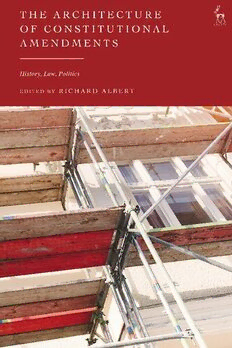
The Architecture of Constitutional Amendments: History, Law, Politics PDF
277 Pages·2023·5.5 MB·English
Most books are stored in the elastic cloud where traffic is expensive. For this reason, we have a limit on daily download.
Preview The Architecture of Constitutional Amendments: History, Law, Politics
Description:
This innovative book blends constitutional theory with real-life political practice to explore the impact of codifying constitutional amendments on the operation of the constitution in relation to democracy, the rule of law and the separation of powers.It draws from comparative, historical, political and theoretical perspectives to answer questions all constitutional designers should ask themselves:The book examines the three major models of amendment codification – the appendative, the integrative, and the invisible models – and also shows how some jurisdictions have innovated alternative forms of amendment codification that combine elements of more than one model in a unique hybridisation driven by history, law and politics.Constitutional designers rarely consider where in the constitution to codify amendments once they are ratified. Yet this choice is pivotal to the operation of any constitution. This groundbreaking book shows why the placement of constitutional amendments goes well beyond mere aesthetics. It influences how and whether a people remembers its past, how the constitutional text will be interpreted and by whom, and whether the constitution will be easily accessible to the governed.A global tour of the high stakes of constitution-making, this book features 18 diverse and outstanding scholars from around the world – across Africa, America, Asia and Oceania, and Europe – raising new questions, opening our eyes to new streams of research and uncovering new possibilities for constitutional design.
See more
The list of books you might like
Most books are stored in the elastic cloud where traffic is expensive. For this reason, we have a limit on daily download.
